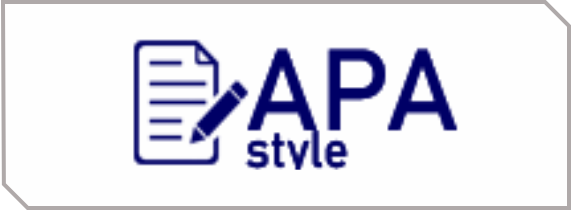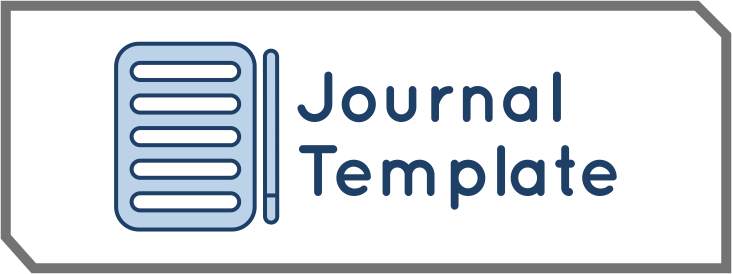Kontribusi Regulasi Diri terhadap Perilaku Cyberloafing pada Tenaga Kesehatan di Puskesmas Kecamatan X
DOI:
https://doi.org/10.55606/jpikes.v5i3.6174Keywords:
Cyberloafing Tenaga, Digital Distractions, Health of the Health Center, Self-Regulation, Service ResponsivenessAbstract
This study aims to analyze the contribution of self-regulation to cyberloafing behavior among healthcare workers at the X Sub-District Community Health Center (Puskesmas). The research background is driven by the widespread internet usage in Indonesia, reaching 229 million users or 80.66% penetration rate in 2025 (APJII, 2025), which potentially leads to digital distractions such as cyberloafing that disrupt productivity and patient safety in the healthcare sector. A quantitative regression approach was employed with a sample of 104 respondents, utilizing the Self-Regulation Questionnaire adapted from Pichardo et al. (2014) (15 items, 1-4 scale) and the Cyberloafing Scale from Blanchard and Henle (2008) (8 items, 1-5 scale). Data were analyzed using simple linear regression via IBM SPSS version 26.0. The results indicate that self-regulation has a significant negative effect on cyberloafing (t = -12.042, p < 0.05; β = -0.621), contributing 58.7% (R² = 0.587). These findings suggest that enhancing self-regulation can suppress cyberloafing tendencies, recommending daily training programs and restricted internet access policies at puskesmas to improve service responsiveness.
Downloads
References
Aciksoz, S., Sendir, M., Atar, N. Y., Simsekoglu, N., & Baydili, K. N. (2024). Exploring the relationship between cyberloafing and innovativeness among nurses in research hospitals: A cross-sectional study in Turkey. BMC Nursing, 23(1), 1–10. https://doi.org/10.1186/s12912-024-02008-6
Ahmad, A., & Omar, Z. (2017). Understanding who cyberloafs from the self-control perspective: A study in the public service sector. International Journal of Advanced and Applied Sciences, 4(8), 123–128. https://doi.org/10.21833/ijaas.2017.08.017
Ahmad, J. (2023). Self-regulation dan self regulated learning dalam pendidikan Islam. Islamic Character Development, 1(March), 20. https://doi.org/10.17605/OSF.IO/87VPD
Alqahtani, N., Innab, A., Alammar, K., Alkhateeb, R., Kerari, A., & Alharbi, M. (2022). Cyberloafing behaviours in nursing: The role of nursing stressors. International Journal of Nursing Practice, 28(5), 1–10. https://doi.org/10.1111/ijn.13079
Baumeister, R. F., Muraven, M., & Tice, D. M. (2000). Ego-depletion: A resource model of volition, self-regulation, and control processing. Social Cognition, 18(2), 130–150.
Blanchard, A. L., & Henle, C. A. (2008). Correlates of different forms of cyberloafing: The role of norms and external locus of control. Computers in Human Behavior, 24(3), 1067–1084. https://doi.org/10.1016/j.chb.2007.03.008
Gamasiwi, R. J., Salsabil, A. S., Novarizka, S., Putri, T. I., & Ikhsani, M. M. (2023). The effect of workload and self-efficacy on cyberloafing behavior on employee performance at Purwokerto Islamic Hospital. Proceeding International Seminar on Islamic Studies, 4(2022), 690–698.
Harnawidyanto, R., Zubair, A. G. H., & Nurhikmah, N. (2022). Pengaruh tingkat regulasi diri terhadap perilaku cyberloafing pada aparatur sipil negara di instansi pemerintahan kota Makassar. Jurnal Psikologi Karakter, 2(2), 210–218. https://doi.org/10.56326/jpk.v2i2.1989
Ibrahim, A., & Helaly, S. (2022). Cyber loafing, procrastination and job conscientiousness among head nurses at Main Mansoura University Hospital. Assiut Scientific Nursing Journal, 10(30), 162–172. https://doi.org/10.21608/asnj.2022.135492.1369
Kim, Y. J., Aslam, M. S., Deng, R., Leghari, Q. A., Lkhagvasuren, D., Nadir, M. N., Qian, L., & Shahnaz, S. (2022). Assessing the workplace cyberloafing behavior among pharmacists in Pakistan. Journal of Research in Pharmacy Practice, 11(2), 73–79. https://doi.org/10.4103/jrpp.jrpp_29_22
Lim, V. K. G., & Teo, T. S. H. (2005). Prevalence, perceived seriousness, justification and regulation of cyberloafing in Singapore: An exploratory study. Information & Management, 42(8), 1081–1093. https://doi.org/10.1016/j.im.2004.12.002
Lim, V. K. G., Teo, T. S. H., & Loo, G. L. (2002). How do I loaf here? Let me count the ways. Communications of the ACM, 45(1), 66–70. https://doi.org/10.1145/502269.502300
Ozler, D. E., & Polat, G. (2012). Cyberloafing phenomenon in organizations: Determinants and impacts. International Journal of eBusiness and eGovernment Studies, 4(2), 1–15.
Pangani, J., & Munyenyembe, B. (2024). The impact of stress and loneliness on cyberloafing of health workers in Malawi: The moderating role of age. African Journal of Empirical Research, 5(3), 640–648. https://doi.org/10.51867/ajernet.5.3.55
Pichardo, M. C., García-Berbén, A. B., De la Fuente, J., & Justicia, F. (2014). Self-regulated learning in higher education: Psychometric validation of a structural model. Learning and Individual Differences, 30, 38–45.
Restubog, S. L. D., Garcia, P. R. J. M., Toledano, L. S., Amarnani, R. K., Tolentino, L. R., & Tang, R. L. (2011). Yielding to (cyber)-temptation: Exploring the buffering role of self-control in the relationship between organizational justice and cyberloafing behavior in the workplace. Journal of Research in Personality, 45(2), 247–251. https://doi.org/10.1016/j.jrp.2011.01.006
Ross, J. (2018). “Cyberloafing” in health care: A real risk to patient safety. Journal of Perianesthesia Nursing, 33(4), 560–562. https://doi.org/10.1016/j.jopan.2018.05.003
Setyanto, A. N., & Ribhan. (2024). Pengaruh cyberloafing dan disiplin kerja terhadap kinerja karyawan Rumah Sakit Natar Medika. JEMSI (Jurnal Ekonomi, Manajemen, dan Akuntansi), 10(2), 1125–1133. https://doi.org/10.35870/jemsi.v10i2.2269
Wulandari, A., Febriana, S. K. T., & Shadiqi, M. A. (2025). Do role overload and negative emotions lead healthcare workers to cyberloafing? Humanitas: Indonesian Psychological Journal, 22(1), 57–73. https://doi.org/10.26555/humanitas.v22i1.898
Yan, R., Yang, Y., & Zhao, M. (2025). The ethical threat of loneliness: The impact of workplace loneliness on cheating behavior. Humanities and Social Sciences Communications, 12(1). https://doi.org/10.1057/s41599-025-04769-0
Zhang, H., Zhao, H., Liu, J., Xu, Y., & Lu, H. (2015). The dampening effect of employees’ future orientation on cyberloafing behaviors: The mediating role of self-control. Frontiers in Psychology, 6, 1–10. https://doi.org/10.3389/fpsyg.2015.01482
Zhang, N., Liu, X., Li, J., & Xu, Z. (2023). The spillover effect of after-hours electronic communication on nurses’ cyberloafing: The mediating role of psychological contract breach. BMC Nursing, 22(1), 1–10. https://doi.org/10.1186/s12912-023-01525-0
Zimmerman, B. J. (1990). Self-regulated learning and academic achievement: An overview. Educational Psychologist, 25(1), 3–17.
Downloads
Published
How to Cite
Issue
Section
License
Copyright (c) 2025 Jurnal Pengabdian Ilmu Kesehatan

This work is licensed under a Creative Commons Attribution-ShareAlike 4.0 International License.









